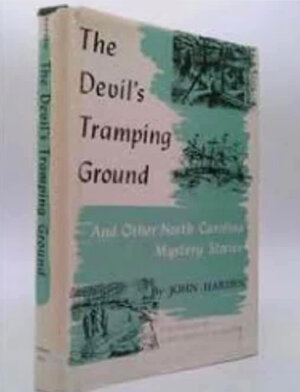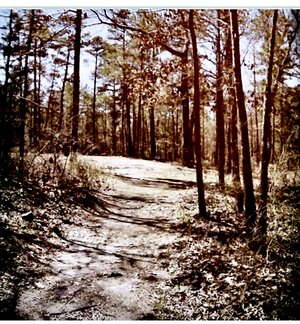donbosco
Inconceivable Member
- Messages
- 3,631

North Carolina is haunted. It is mysterious. It was LOST from the very start of its Invasion History. Sandwiched between “The Mother of Presidents” and a bunch of “Fire-Eating Sandlappers” we (without the slightest irony) proudly claim both humility (To Be Rather Than To Seem) and a homegrown brand of working class stubbornness (Tar Heel is about sticking when others flee, see Bruce Baker’s definitive history of the term here: Project MUSE - Why North Carolinians Are Tar Heels: A New Explanation - Note that the author, a historian, found the term to predate the Civil War), but if newspaperman and author John Harden (1903-1985) is to be believed we might very well deserve the more modern handle, Ghostbusters.

John Harden is the author of two books that, as best I remember, graced the living room book shelves of every member of my mother’s large family and many others in Chatham: 1) ‘The Devil's Tramping Ground and Other North Carolina Mysteries,’ and 2) ‘Tar Heel Ghosts.’ I poured over those smallish reads as a boy and was particularly delighted that the first bore in its very title the name of a mysterious enough place just three miles from my house in #Bonlee, and situated in the Deepest of #DeepChatham — The Devil’s Tramping Ground. I’m not going to try and explain that place here. You can Google and library-search for hours on that but I will say two things about the spot. The first is that I often heard it said by the customers in #BonleeHardware that the place was much less ‘active’ than it once was because the Bad Man was so busy at present that he had little time, or need, for a place to pace and plot. And second, I’ve always suspected that moonshining had just a little something to do with the legend. That comes from my Deddy, who, as I have previously noted, knew about such things.
Those two little books were filled with tales of hoof prints in stone, disappearing hitchhikers, golden arms, and distant, sometimes moving, and unexplainable, lights. The Tramping Ground being so close by — I have visited many times. I’ve been a guide for a significant number of those forays and the telling of a scary story or two along the ride is mandatory. Once upon arriving with a car full of northern cousins as we piled out of my ‘75 Chevelle (The Gray Ghost I called her!) a skinny little dog appeared from the darkness and proceeded to silently lead us up the trail. That little guy then melted into that same darkness just as the wind came up and a loud rumble of summer thunder sent us all recklessly stumbling back down that same path, now laced by what seemed to be cross-trail roots that rose up to meet our feet. It was a glorious fright.

I often mention North Carolina’s Haunted History in class. I’m sad to report that those books don’t seem to be as popular as they once were. My students don’t know about ‘The Ghost of Maco Station” or “A Colonial Apparition” or “The Little Red Man.” I’m not saying that spooky things and creatures are currently in short supply, after all the creators of one of the scariest horror stories of late, ‘Stranger Things,’ Matt and Ross Duffer are born and raised up Durhamites. Sadly for us, North Carolina’s recent unfriendliness toward the Arts and Entertainment meant that instant classic was filmed in Georgia (and set in Indiana) instead of This Haunted Land.
We began our so-called modern history with a mystery still unsolved - we are thus, still LOST in a way. Perhaps that is the essence of Esse Quam Videri - the great search for being - or, in turn, nothingness?
#OTD in 1590 John White returned to Roanoke Island and found CROATOAN carved in a post. The second sign, one of danger, a Maltese Cross, was not evident (I’ve always thought that they had that backwards. Two signs for safety, a single and most simple one for flight). He left out for England in 1587 for supplies but war with Spain and pirates prevented a quick return. The carving was a sign that the colony had moved. They were-sadly-LOST.

Origins of the “Lost Colony” Mystery
On August 18, 1590, Englishman John White returned to Roanoke Island to resupply the colony established on the island in 1587. White found the settlement abandoned. A single word “CROATOAN” was carved on a post in the fort.
Last edited by a moderator:


